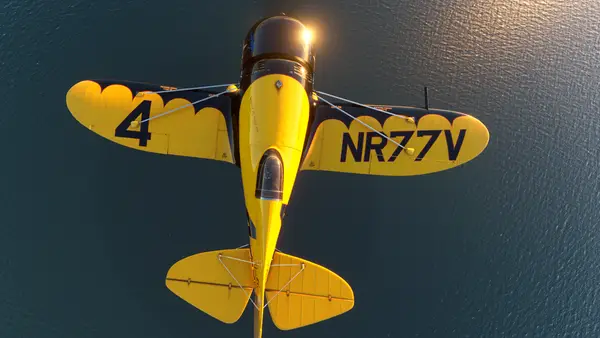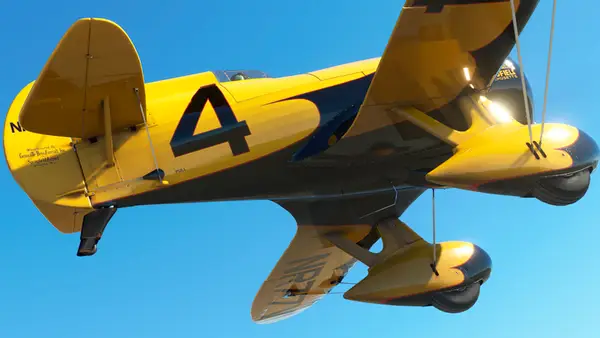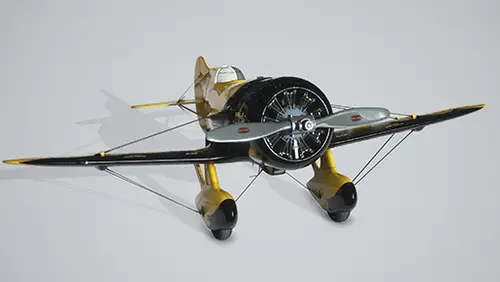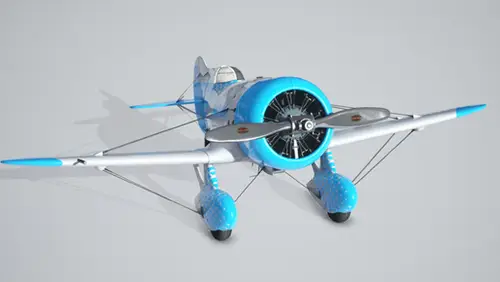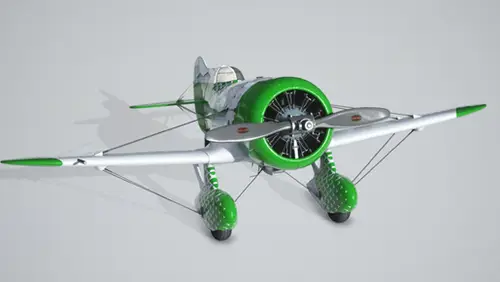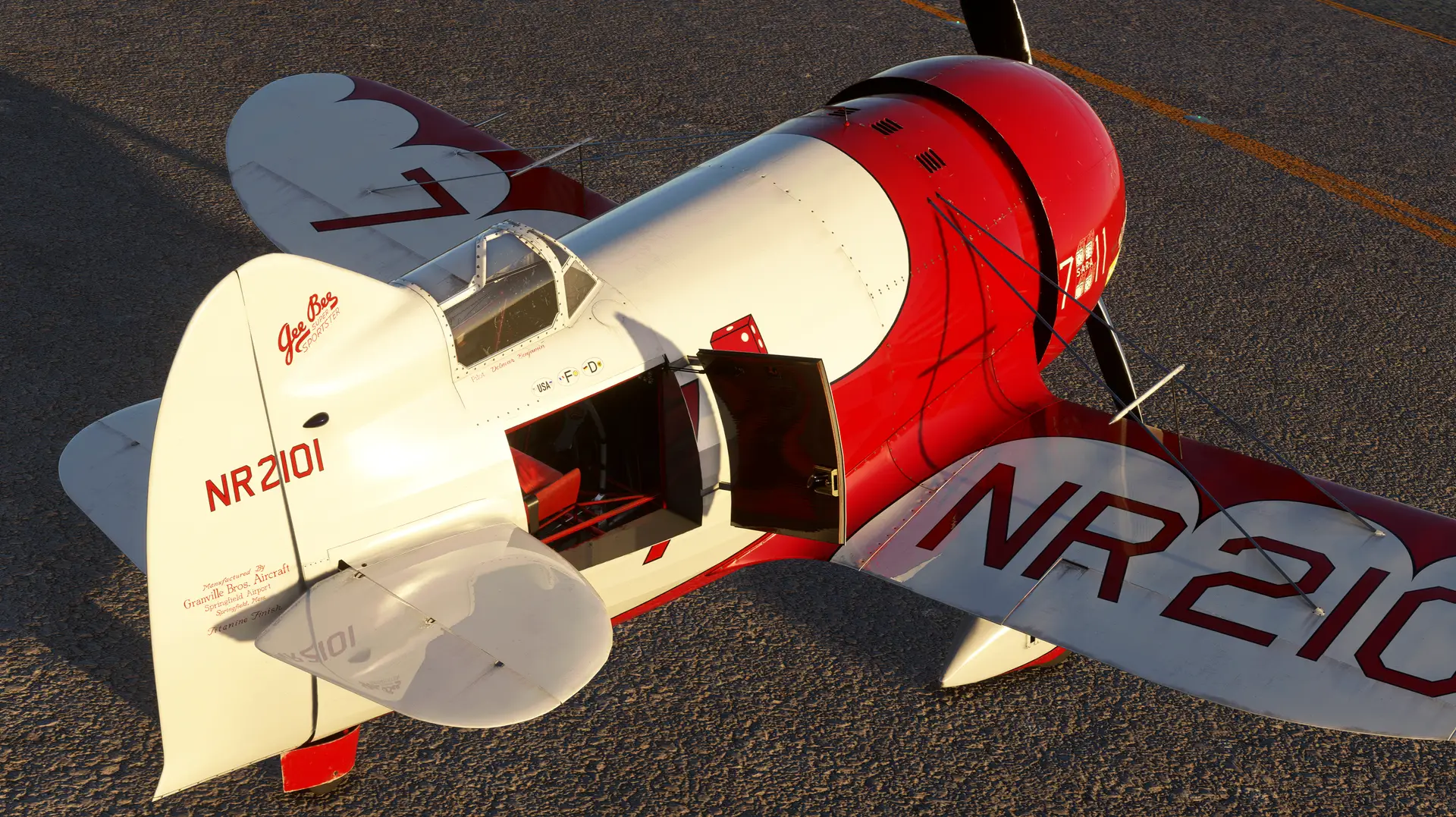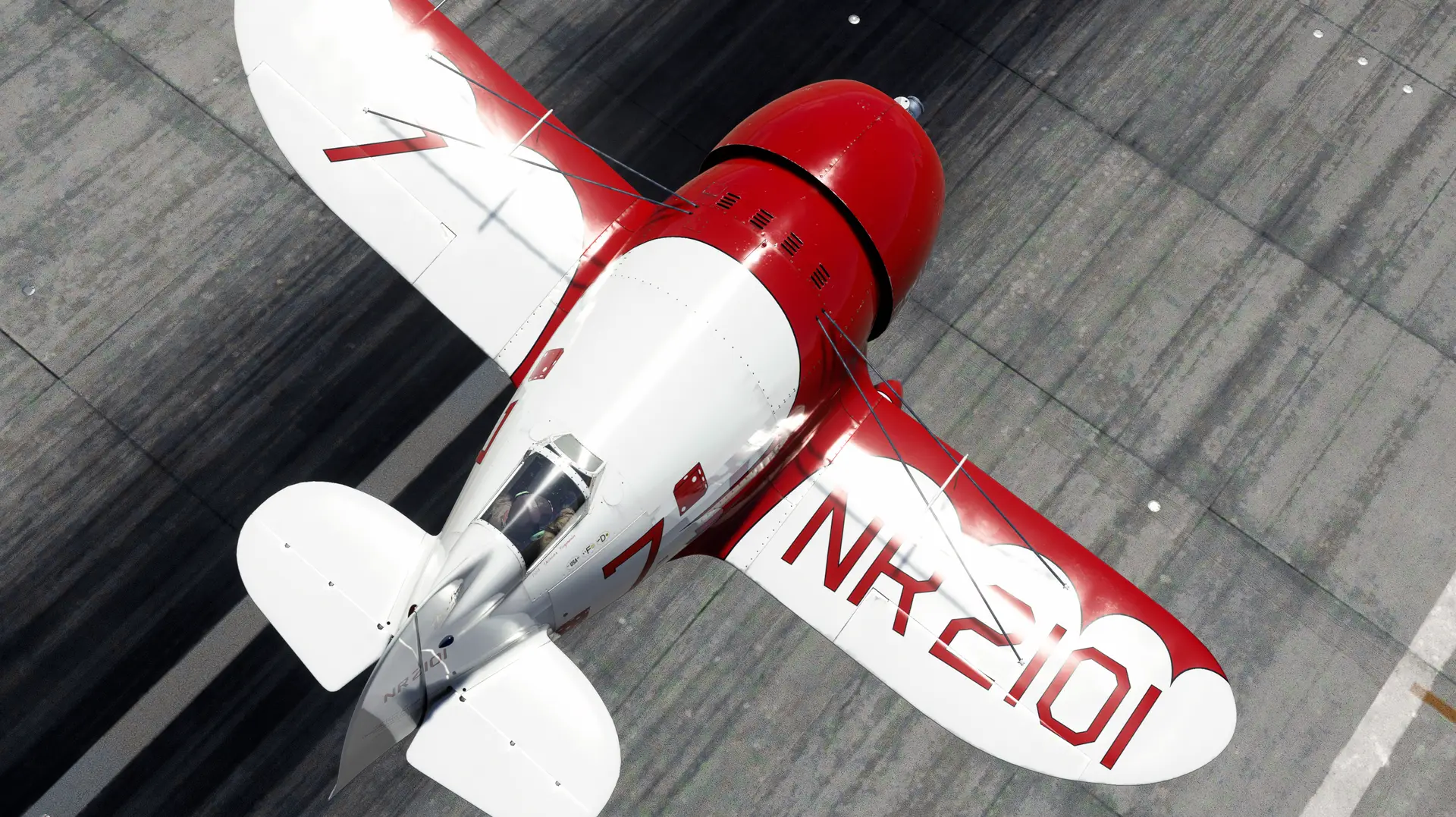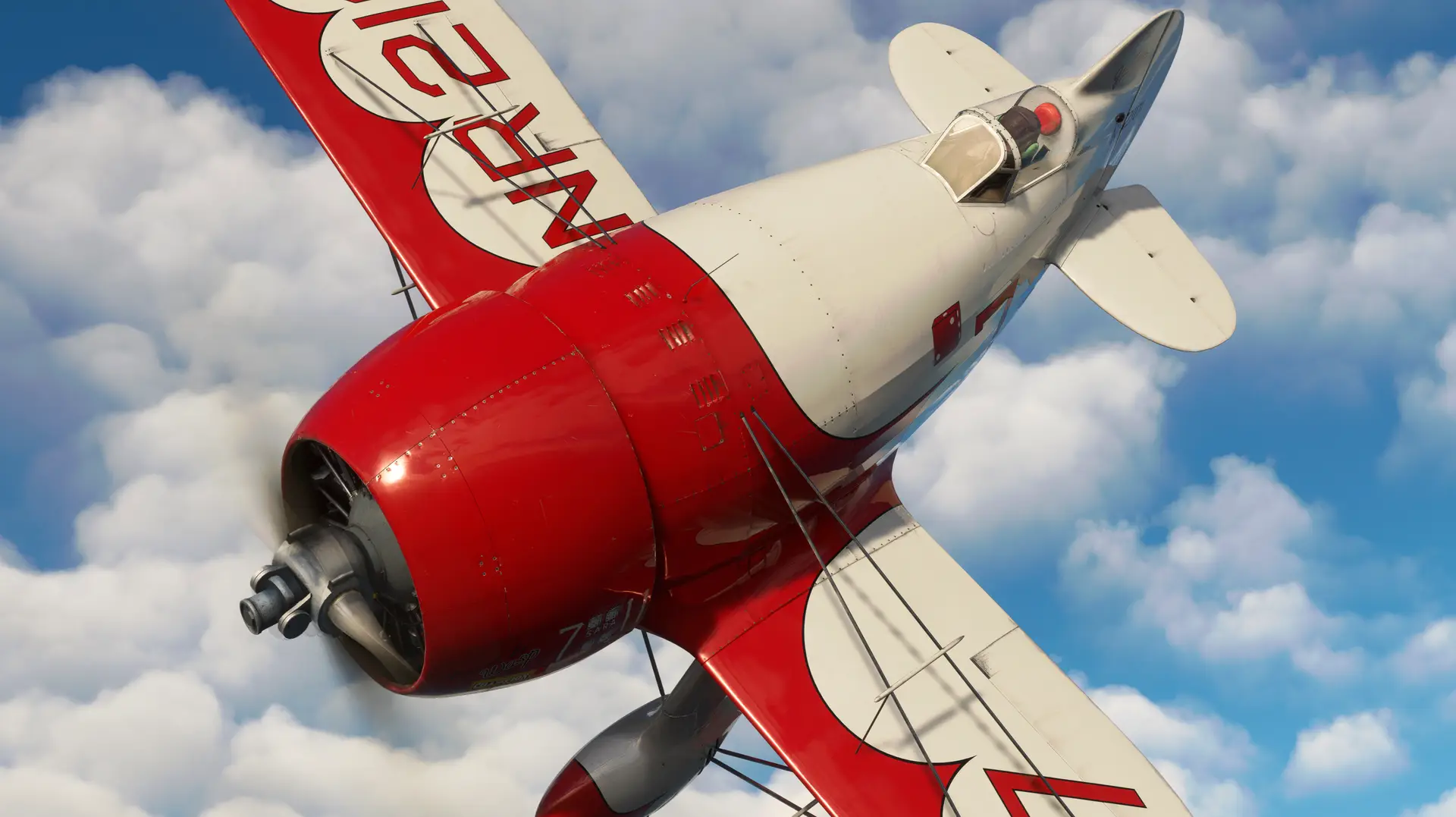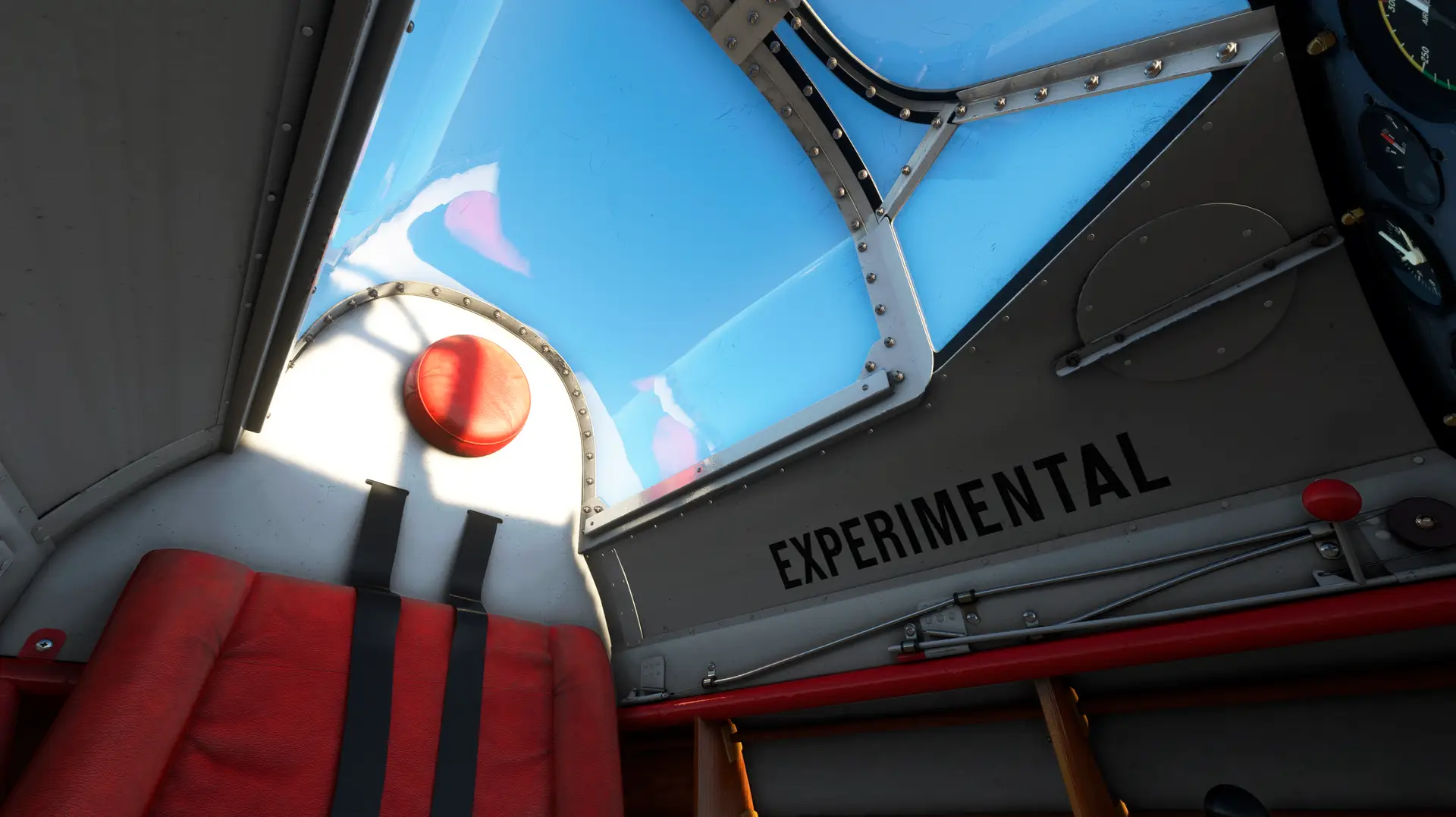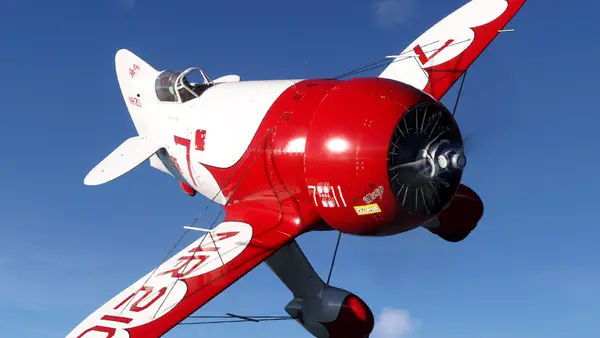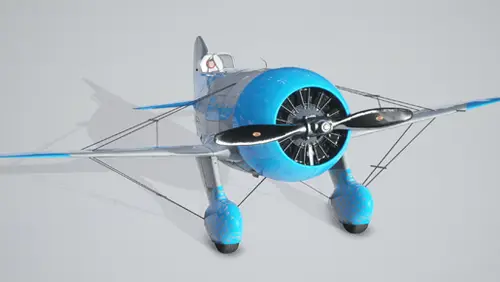The Gee Bee Model Z Super Sportster is a single-seat, low wing, single-engine racing aircraft created by American aircraft builder Granville Brothers Aircraft. The one-of-a-kind Model Z was the first of a distinctive line of racing aircraft built by the Granville Brothers, with the Z constructed specifically for the 1931 Thompson Trophy (pylon race) at the National Air Races at Cleveland, Ohio. The Model Z took first place in the competition, spawning further Gee Bee models, notably the R-1 and the R-2.
The Model Z has a renowned form with a stout cylindrical fuselage, a fixed standard empennage, and straight main wing. The cockpit is located at the rear of the aircraft, abutted against the leading edge of the Model Z’s small vertical stabilizer. The aircraft has a wingspan of 23 feet, 6 inches and measures 15 feet, 1 inch in length. It is powered by a Pratt & Whitney R-985 Wasp Junior supercharged 9-cylinder radial engine that delivers a maximum 535 horsepower to a fixed-pitch, 2-blade Curtiss Reed propeller. It has a range of 900 miles, cruises at 230 miles per hour, and has a maximum clocked speed of 267.342 miles per hour (Shell Speed Dash qualifying round, held on August 22, 1931, at the National Air Races).
After the 1931 victory, the Granville Brothers fitted the Model Z with a larger powerplant, a Pratt & Whitney R-1340, a 9-cylinder radial engine that produces 750 horsepower. The Model Z with the new engine clocked an unofficial time of 314 miles per hour on December 1, 1931 during a world speed record attempt. Tragically, during another record attempt a few days later, on December 5, it crashed, killing the pilot, Lowell Bayles.
The Gee Bee Model Z Super Sportster is a craft that earned iconic status during the Golden Age of Air Racing for its raw ability for speed. In capable hands this burly legend can bring out the very best in aviators due to its power and responsive control.
The Gee Bee Model R-2 Super Sportster is a low-wing, single-engine, single-seat racing airplane manufactured by American firm Granville Brothers Aircraft. The R-2 was designed specifically for the 1932 National Air Races, held at Cleveland, Ohio from August 27 to September 5. Piloted by Lee Gehlbach, the R-2, Race Number 7, took fourth place in the Bendix Trophy Race (cross country race) and fifth in the Thompson Trophy Race (pylon race). First place in the Thompson Trophy Race went to famed aviator Jimmy Doolittle, flying the R-2’s sibling, the Gee Bee Model R-1, designed with a smaller fuel tank and a more powerful engine than the R-2.
The R-2, like other Gee Bee racers, has a distinct look with a barrel-like fuselage, a main wing with a straight leading edge, and standard empennage with a small vertical stabilizer. One of the most striking characteristics of the R-2 is the position of the cockpit: just in front of the vertical stabilizer.
The Gee Bee R-2 measures 17 feet, 8 inches in length, has a wingspan of 25 feet, and has a fixed standard undercarriage. It is powered by a 9-cylinder supercharged Pratt & Whitney R-985 Wasp Junior radial engine that generates up to 535 horsepower and drives a 2-blade Curtiss Reed fixed-pitch wood propeller. The R-2 has a range of 900 miles, cruises at 230 miles per hour, and has a top recorded speed of 247.339 miles per hour (qualifying round for the Thompson Race at the 1932 National Air Races).
One of the most renowned aircraft in history, the Gee Bee R-2 Super Sportster is also one of the most notoriously difficult to fly. In the hands of a skilled aviator, however, the machine can perform remarkably well, offering precision and power.





